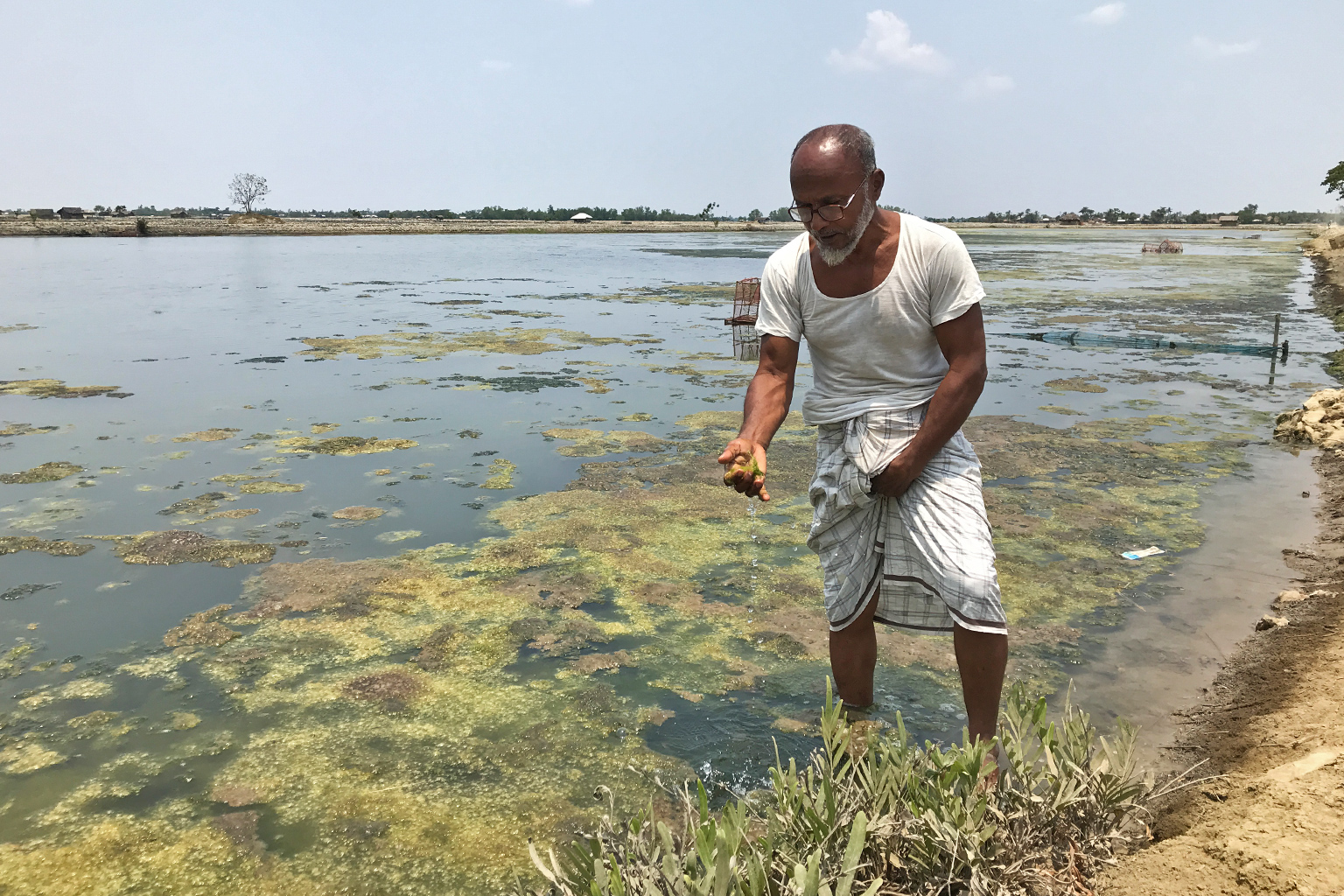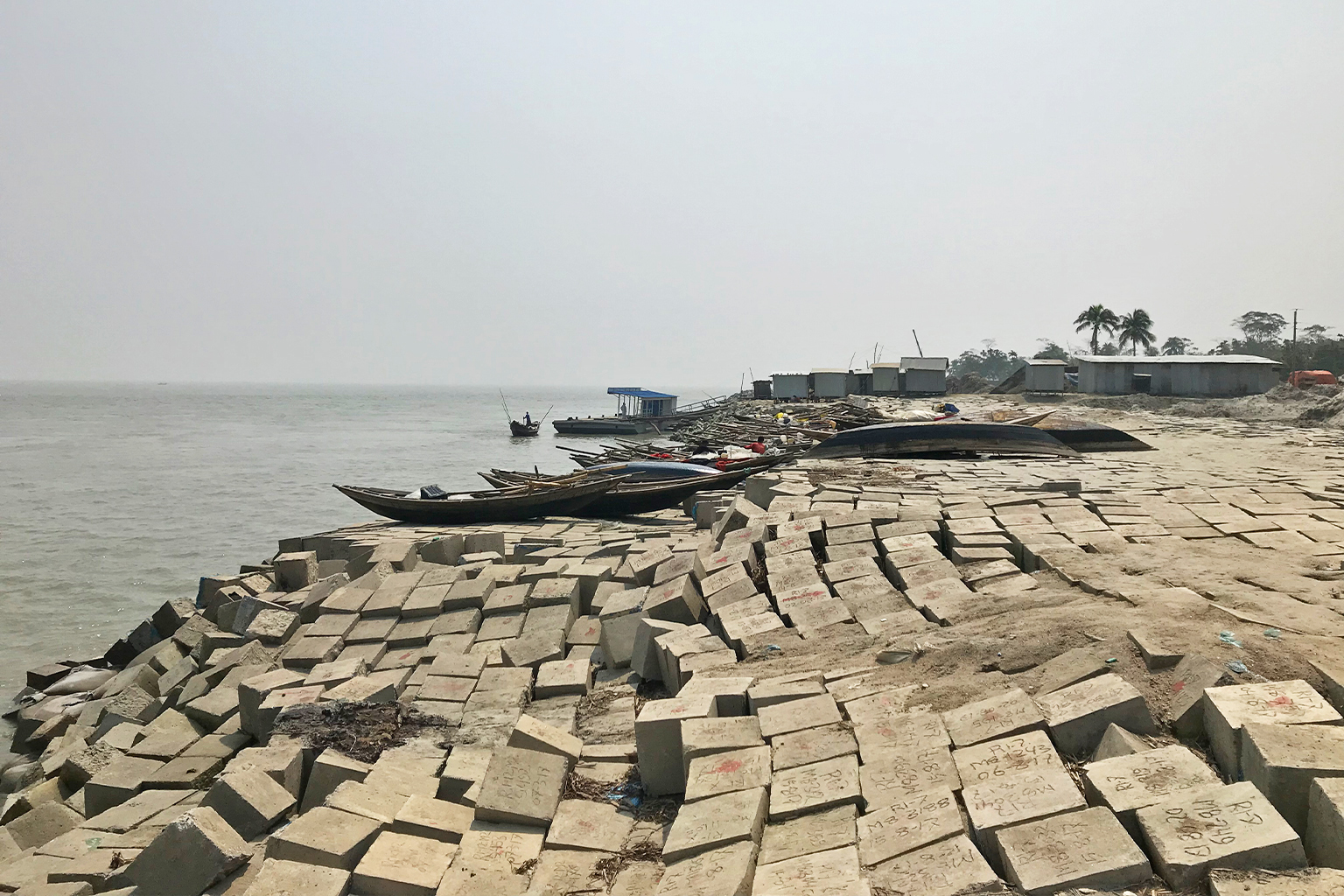- Bangladesh is trying to mainstream climate change adaptation into development measures to address climate change vulnerability and challenges.
- However, the socio-economic context and environmental consequences must be considered while implementing development programs.
- Failure to address local context might result in maladaptive trajectories, but Locally Led Adaptation (LLA) and Nature-based Solutions (NbS) are potential options for effective adaptation to climate change.
- This article is a commentary. The views expressed are those of the authors, not necessarily of Mongabay.
Bangladesh, a least developed country in South Asia, has made remarkable progress in various development sectors over the last few decades. From agricultural production and food security to infrastructural development, the country has set milestones within the region, in spite of being a nation vulnerable to climate change. Mainly, the geographical location, dense population, and socio-economic aspects are the prime factors making the country susceptible to climate change impacts. The Global Climate Risk Index published by Germanwatch in 2021 ranked Bangladesh as the seventh most vulnerable nation to climate change.
Despite such challenges, the country is achieving global and national goals and targets successfully. This is possible as most of the development measures are supporting and complementing adaptation practices, helping the communities to become more resilient to climate change.
‘Adaptation’ to climate change is an effective measure to reduce the vulnerability of the common considering the socio-economic context of Bangladesh. The IPCC promotes effective adaptation interventions, as such measures can play a vital role in reducing the exposure and vulnerability to climate change. Moreover, adaptation to climate change benefits in several other ways which include preventing future losses such as damage to infrastructure, poor health conditions, economic opportunities, initiating wider social and environmental benefits, and providing a safety net for vulnerable communities.
Initiatives and adaptation
With a vision to become a developed nation by 2041, the government has undertaken various mega projects all over the country. All these mega infrastructure projects are carried out to improve the livelihoods of the general public, bringing in transformational change and investments for the future. Besides, these projects would also boost the country’s GDP, and improve communication and networking.
Considering the climate change vulnerability especially in the coastal region, other infrastructures are also being developed, for instance the construction of multipurpose cyclone shelters, embankments, and polders, plus changing roof materials to strengthen and protect shelters during cyclones.
Additionally, there is the cyclone early warning system, the introduction of salt tolerant varieties of crops, floating gardens, cage culture of freshwater fishes, integrated farming, crop-aquaculture systems, tree planting along the coastline, rainwater harvesting, pond sand filtration (PSF) systems, increasing the height of plinths, replacing mud walls with bamboo ones, crop rotation, and introduction of stress-tolerant varieties of crops. These are some effective ways of adaptation in the country.
Read more: Climate change puts Bangladeshi farmers’ reliance on rice varieties to the test
Bangladeshi coastal communities plant mangroves as a shield against cyclones
Despite being a pioneer in adaptation practices, in Bangladesh, there are several development interventions that failed to address the local context and long-term environmental consequences. As a result, these development measures became ineffective and failed to serve their ultimate purpose. Any sort of development initiative and adaptation intervention can only be termed ‘effective’ when it is proven to be sustainable, eco-friendly, and bring greater benefit to the most vulnerable communities. Therefore, prior to implementing a development program or promoting an adaptation intervention, the local, environmental, and socio-economic context needs to be considered. Otherwise, adaptation interventions can result in maladaptive trajectories.

Maladaptation: Failure of adaptation interventions
When we talk about ‘maladaptation’ it can be simply defined as the failure of effective adaptation interventions. The IPCC’s third assessment report termed it as any sort of the change in the natural and human system that inadvertently increases vulnerability to climatic stimuli – these are adaptation interventions that do not succeed in reducing vulnerability but increase it instead.
Maladaptation can be conceptualized in three broad categories – infrastructural, institutional, and behavioural, the latter of which are outcomes of implemented projects failing to understand and consider the social, local, or ecological contexts.
For instance, shrimp farming in the southwestern coastal region of Bangladesh can be a good example of behavioral maladaptation: in this region of Bangladesh where salinity intrusion is a major concern, shrimp farming has been widespread due to its high economic benefit and great demand in the international markets. At an early-stage, shrimp farming was a successful intervention in the saline-prone areas which was promoted by the government and various donor NGOs. This influenced many farmers to convert their farmlands into shrimp farms and introduce saline water into the islands. However, in the long run, the saline water hampered vegetation activities, reduced soil fertility, contaminated the freshwater sources, and impacted the WASH services of the locality. Besides these impacts, it was reported that the benefits of commercial shrimp cultivation were not equally shared among all associates. The majority of the profit was owned by a small group of landlords and urban-based processing factory owners.
Hence, the poor farmers associated with shrimp cultivation had limited opportunities to improve their economic conditions. Another concern that can be related to the aspect, was the low labor demand. It was reported that a minimal amount of labor was required for shrimp farming compared to rice cultivation, resulting in a labor surplus in the region. This compelled many landless farmers and day laborers to migrate to nearby urban areas to find a living. Hence, shrimp cultivation became a debated issue in terms of climate change adaptation intervention, and is often considered as an unsustainable practice threatening the wellbeing of the locals.

A solution turns out to be the problem
So, while promoting an effective adaptation measure, certain components must be recognized. Similarly, an entire development program can fail to achieve its ultimate purpose if the social, political, economic, environmental, and ecological aspects are not considered while designing it. Failure to address one of these factors, and exclusion of local context, might result in flawed interventions, leading to catastrophe, economic loss, and disruption of social wellbeing.
The Haor Road connects the three upazillas (sub-districts) of Kishoreganj (Itna, Mithamoin and Austagram) a northeastern, flood-prone district also known as an extended haor (a bowl or saucer-shaped depression also known as backswamp) region which remains submerged most of the year. Therefore, to improve their connectivity, a 29.73 km road was inaugurated in 2020 and a total of 874.08 crore BDT (approximately $9.2 million US) was spent to construct the road, which goes straight through the heart of the vast haor area in parallel with Dhanu and Baulai rivers starting from Itna Upazila Sadar to Austagram via Mithamoin Upazila. The infrastructure is undoubtedly a significant achievement of the government, connecting the haor communities with the central regions, but there have been a number of complications related to the construction.
As per the local’s view, the road has been disrupting the free flow of water in the haor basin that has been leading to untimely floods, inundating thousands of hectares of land, and damaging boro (rice sown in winter and harvested in summer) cultivation. In the haor region, boro cultivation is an important livelihood option as it is the only crop cultivated in the area, and this year in April the area was frequently submerged resulting to a damage around 1,000 crore BDT (approximately $105 million).
Locals also claim that the recent flood and water logging conditions in the northeastern region including Sylhet, Sunamganj, Netrokona and districts are associated with the Haor Road to some extent. Assam and the Meghalaya, two territories of India upstream of northern and northeastern parts of Bangladesh, received record-breaking amounts of rainfall a few weeks ago and a massive amount of water flowed downstream through the rivers and haors of Bangladesh before falling into the Bay of Bengal. The locals opine that the all-weather Haor Road disrupted the natural flow of water and trapped it within certain areas, resulting in devastating floods in the Sylhet region. Perhaps this hasn’t been the only case: rather similar events from right after the construction of the road led the cabinet to abstain from any further road construction in the haor region. Many experts opine that failure to consider the environmental context while executing the planning and construction of the road was the key to an issue of such colossal damage.
However, the benefits of commercial shrimp production are not shared among all members of these communities equally. The majority of profits are earned by a small percentage of large absentee landholders, and by urban-based processing factory owners (Adnan, 2013; Paprocki & Cons, 2014). The salination of agricultural soils through the intrusion of saline water used in shrimp ponds has its own environmental consequences and compromises the fertility of the soil for ongoing and future agricultural cultivation (Ali, 2006; Hossain, Dearing, Rahman, & Salehin, 2016). Moreover, the extremely low amount of labour required for shrimp production relative to rice farming causes a labour surplus that results in displacement from agricultural livelihoods, forcing many landless labourers and former sharecroppers to move to cities in search of work (Paprocki & Cons, 2014).

Way forward
From both the cases mentioned above, we can clearly pinpoint the failure of inclusion of the local context, environmental consequence, and lack of foresight. With the changing climate, the frequency and intensity of natural calamities are predicted to be increased. Thus, ‘effective’ adaptation measures and development plans should be undertaken.
To do so, first of all the local communities and the most vulnerable groups’ perspective and knowledge along with other stakeholders’ active participation need to be ensured. To involve the local communities pro-actively in adaptation interventions, the LLA (Locally Led Adaptation) principles can be a guiding tool for policymakers and implementers. The principles of LLA ensure the local community’s active participation to lead sustainable and effective adaptation actions to climate change. Hence, this could be an effective tool when undertaking any sort of development program.
Secondly, for a successful intervention, the environmental and socio-economic scenario of the project implementation area should be considered. To understand the environmental context extensively with a sustainable development objective, and betterment of nature and human wellbeing, nature-based solutions (NbS) can play a vital role in undertaking effective adaptation interventions and development programs. This could be another guiding principle for policymakers and implementers to look at.
The sustainability and the future potential impacts of the development project or adaptation intervention on the locality should also be evaluated. Monitoring, evaluation, accountability, and learning mechanisms can be introduced within the system for successful implementation, improvement, scope identification, scaling, and replication of the initiatives.
Finally, forecasting and early warning systems of climatic events should be improved. This can only be possible through regional cooperation and accessibility to weather data. As the transboundary rivers carry the water from upstream areas, it is important to know the precipitation rate and other necessary weather components and parameters of the surrounding areas. Such measures would not only help to predict the floods more precisely, but also to take necessary precautions in time to minimize loss and damage.
Saleemul Huq is director of the International Centre for Climate Change and Development at Independent University, Bangladesh. Email: saleemul.huq@icccad.org
Savio Rousseau Rozario is the Research Officer of the International Centre for Climate Change and Development at Independent University, Bangladesh. Email: savio.rozario@icccad.org
Md. Bodrud-Doza is a Doctoral Researcher at the department of Geography, Environment & Geomatics, University of Guelph, Canada. Email: mbodrudd@uoguelph.ca
Banner image: A woman collects water through rainwater harvesting in a coastal town in Bangladesh. Image by Abu Siddique/Mongabay.
Read more:
Elevated homesteads give hope to flood-hit communities in Bangladesh
‘The volume of water is beyond control’: Q&A with flood expert M. Monirul Qader Mirza
Citations:
Paprocki K. & Huq S. (2017). Shrimp and coastal adaptation: on the politics of climate justice. Climate and Development. DOI: https://doi.org/10.1080/17565529.2017.1301871
Schipper (2020). Maladaptation: When Adaptation to Climate Change Goes Very Wrong. One Earth. Volume 3, Issue 4. https://doi.org/10.1016/j.oneear.2020.09.014













